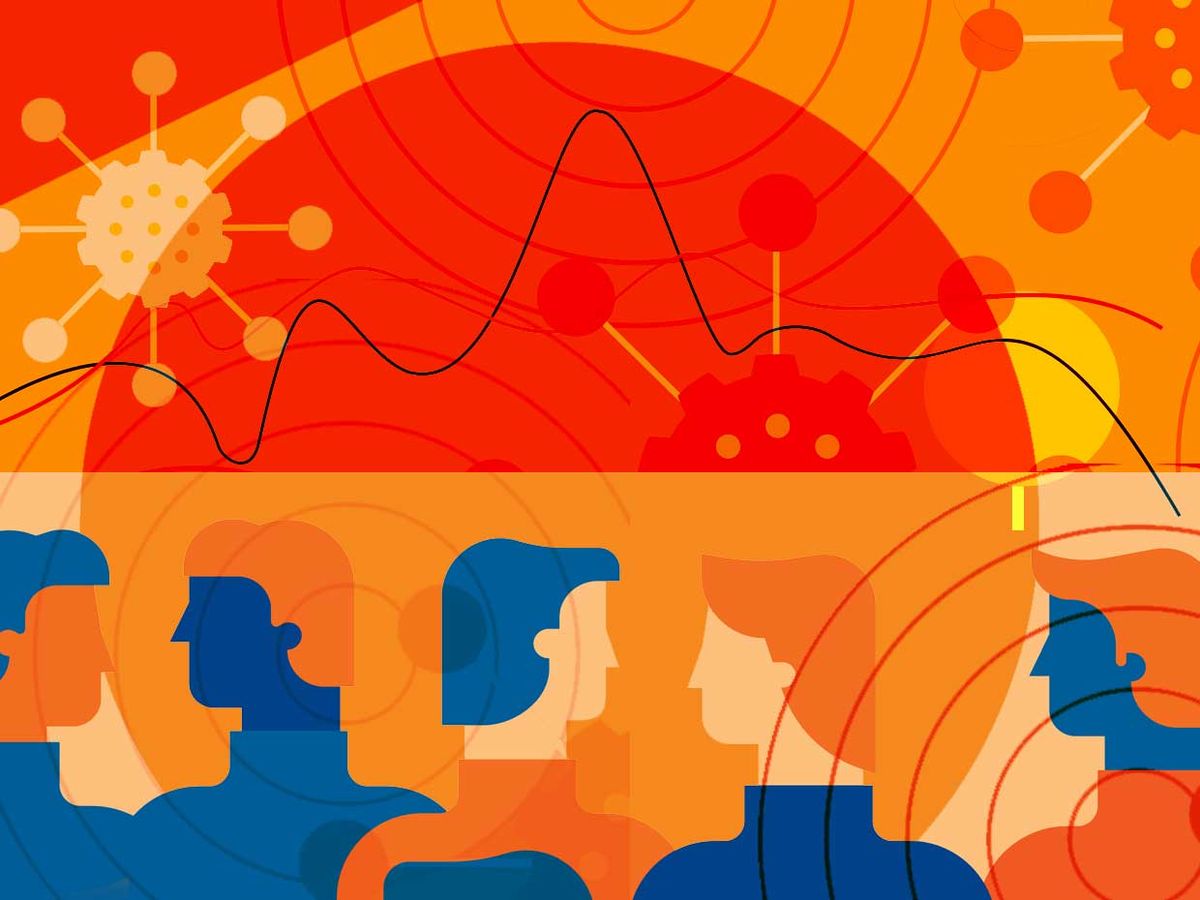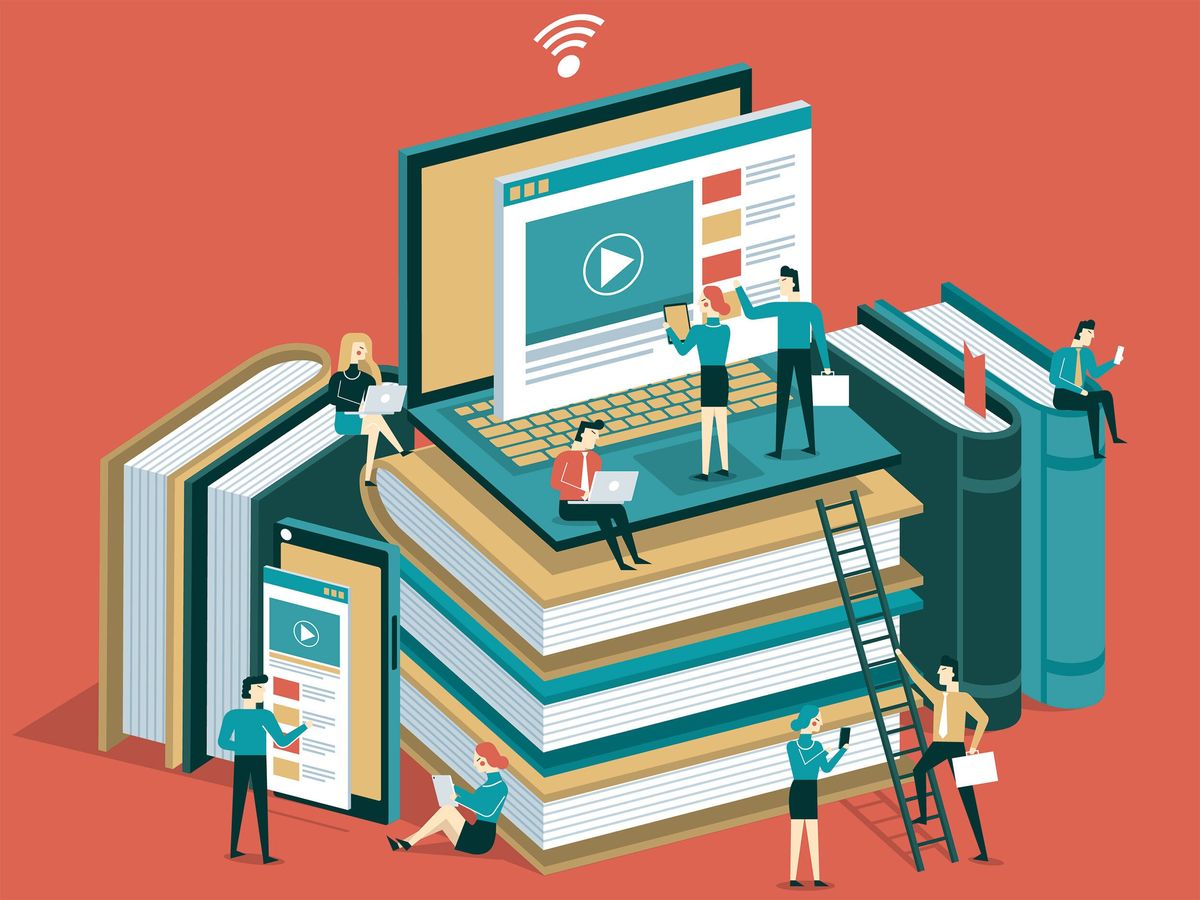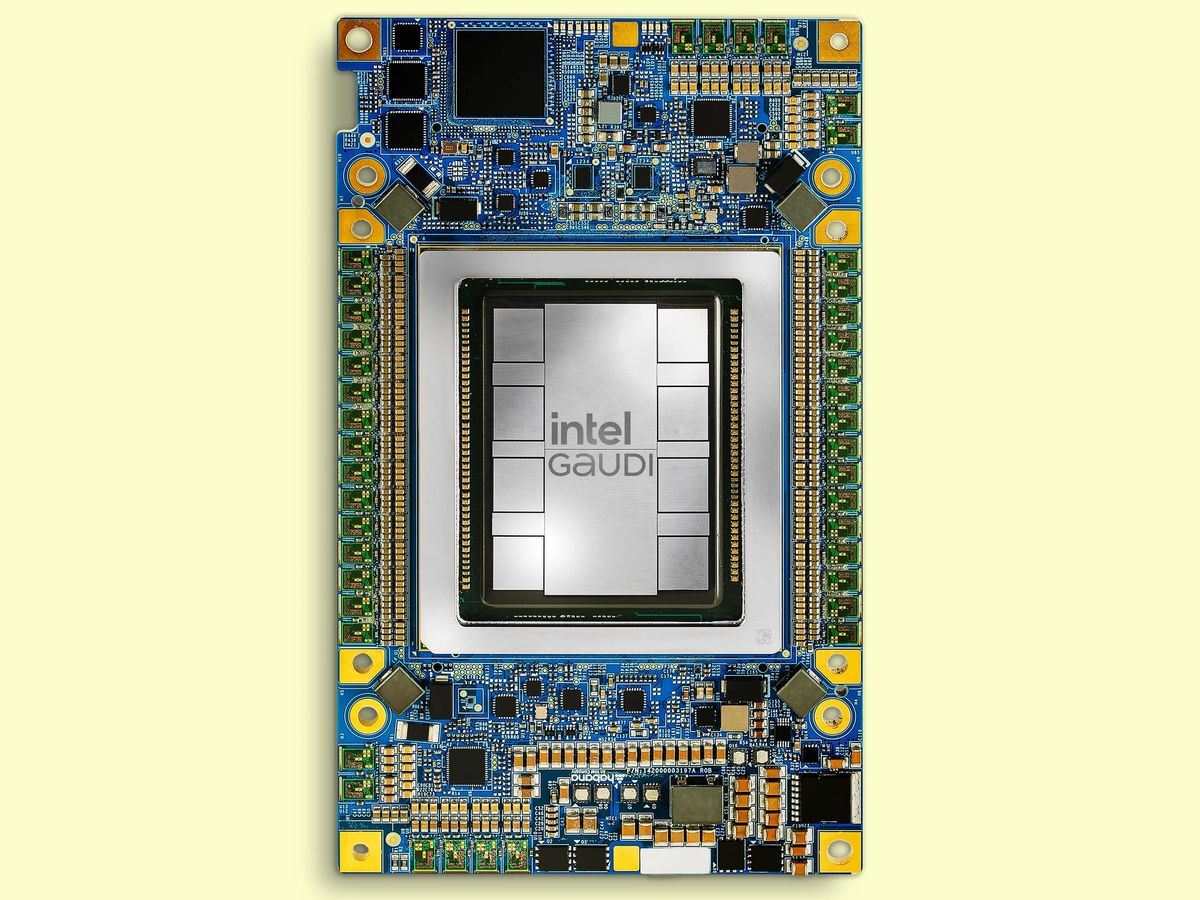THE INSTITUTE There is little doubt that emerging technologies will help societies anticipate, manage, and mitigate the negative impacts of future global pandemics. But the use of such technologies must be guided with regard for citizens’ privacy, security, and well-being, and concern for its deployment and implementation.
Drawing on lessons learned from COVID-19, several IEEE experts with a variety of technological backgrounds are considering the societal aspects of technological solutions to securing health and economic systems against future pandemics.
They are systems engineer Anwer Al-Dulaimi, neuroscientists Laura Y. Cabrera and Jacob T. Robinson, communications systems research scientist Ashutosh Dutta, symbiotic autonomous system expert Derrick de Kerckhove, networking engineer Jason Rupe, telecommunications experts Roberto Saracco and David Witkowski, and entrepreneur Yu Yuan. They represent the IEEE Blockchain, Brain, Digital Reality, and Future Networks initiatives.
Here they look at how technologies such as big data, blockchain, 5G, and drones can assist in the areas of health care and the supply chain.
HEALTH CARE, CONTACT TRACING, AND SURVELLIANCE
The coronavirus pandemic has affected the mental health of many, including health care workers; those who have lost their job; COVID-19 patients and their families; and patients in quarantine.
Robinson, who is cochair of the IEEE Brain initiative, says technologies that better assess and treat disorders such as depression and post-traumatic stress disorder are likely going to play a key role in the recovery from this and future pandemics.
“A better understanding of how humans make decisions under uncertainty and stress can help better frame public health–policy responses,” adds Cabrera, who is the International Neuroethics Society liaison to IEEE Brain. “For example, the analysis of social media use can inform us if there are certain populations at an increased risk of suicide ideation or other patterns of behavior that might need to be addressed. Here, insights from big data analytics, behavioral neuroscience, and artificial intelligence are key. This can help mitigate the health impacts.”
Any system using personal data will need to be designed carefully.
“As we think of ways in which the convergence of emerging technologies can help to address future pandemics, it is important that we keep in mind the ethical, legal, and societal implications of those approaches,” Cabrera says. “In many cases there will be trade-offs between benefit gains and potential risks and harms that need to be understood, such as increased surveillance, which has benefits in terms of gathering data needed to better understand patterns, while raising problems around privacy and misuse of the data gathered. And in terms of the collection of personal data, ethical and legal frameworks that better delineate who has access to such data—for how long and for which uses—are still needed.”
Many technologies being developed to fight COVID-19 are expected to help decrease the spread of other viral infections such as the flu and the common cold, Witkowski says. He chairs the deployment working group for the International Network Generations Roadmap being developed by IEEE Future Networks.
“Home testing systems being developed for COVID-19 gives us an opportunity to control other infectious diseases [such as the flu],” he says. “Imagine drawing a small sample of blood, similar to a blood-glucose test for diabetics, before leaving home. The results would be sent to a smartphone or wearable and could be shown at public places that would require you to show your daily test results before entry.”
Telecommunications, big data, and artificial intelligence could improve contact tracing.
“The mobile networks have the necessary techniques that could be leveraged to identify potential patients who have been in touch with confirmed infected cases,” Al-Dulaimi says. He is a member of the IEEE Future Networks Tech Focus editorial board.
“For instance, massive MIMO [multiple-input, multiple-output] in 4G/5G will allow precise measurements of spacing between connected users and can also specify their location on timely basis. Such data will normally be preserved in the call data records (CDRs) and could be a great asset for health inspectors to monitor virus transmission. From a technical perspective, this will require heavy processing of CDR data stored in big data through artificial intelligence. Later, operators could advise suspected patients to take the test by sending them direct text messages. Creating this alarm system will require operators to share the users’ records with health authorities.”
Blockchain, the decentralized-ledger technology, could help gauge the spread of the virus, Yuan says. Yuan, who chairs the IEEE Blockchain Asset Exchange, says blockchain should be able to improve the efficiency and transparency of pandemic surveillance. It could be done by building a platform that integrates data from multiple industries including health care, travel, transportation, telecommunications, and retail. Data sometimes is faked or manipulated. Blockchain’s major role in the platform would be to ensure that nobody could fake or manipulate data without leaving a trace. Data sources with a history of reporting fake data could lose credits and be assigned lower weights in data analytics.
Meanwhile, the major role of artificial intelligence would be in data analytics.
“No matter that we call that—big data or AI or deep learning—basically we need the same kind of enabling technologies to dig the data, find patterns, and generate estimates/forecasts,” Yuan says. “The platform can start from very limited data sources—for example, publicly available COVID-19 tracking data from health care institutions. But along with more data sources from individuals’ smartphone apps, data from telecom operators, or data from taxi companies being added to the platform, the efficiency and accuracy of the platform’s output, for example, on the risk of infection in a particular building, will be significantly improved.”
Rupe adds that blockchain-like technologies could be used to track and distribute information about infections in a secure fashion. He is cochair of the IEEE Blockchain initiative.
“This ledger could include information such as who has been tested and when and where, confirmed to have or have not contracted the novel coronavirus, date of inoculation, and who they come in contact with,” he says.
THE CHANGING SUPPLY CHAIN
Witkowski notes that although the coronavirus pandemicbears many similarities to previous pandemics, mostly to the Spanish Flu of 1918–1919, there are major differences: the existence of telephony, the Internet, and the networks on which they run.
“Having to shelter in place may be a minor or major inconvenience,” he says, “but the telephone system and the Internet are allowing many people to remain employed, access news and entertainment, attend school, connect with their doctors, and order food. In many ways, the telephone system and Internet are minimizing the negative impacts of the pandemic.”
The Internet has already allowed people to avoid going to stores during the pandemic by ordering things online.
In the future, deliveries by drone and autonomous vehicle, once considered a somewhat quirky idea, will become common as companies look for ways to minimize the need for human drivers, Witkowski says, and as shoppers look for ways to reduce the number of potentially infected people handling their items.
De Kerckhove says discussions and research by independent firms such as IDTechEx are taking placeabout automated delivery systems either by air (drones) or by road. As reported by Science Review, articles discussing the subject of drones for parcel and passenger transportation have drastically increased since 2013. Although current debates are strongly dominated by technical and regulatory issues, future development of drone technologies are likely to be increasingly dependent on public acceptance.
“That approach is still in the beta stage and will require both investment and regulation over the next few years,” says De Kerckhove, who serves on the steering committee for IEEE Digital Reality.
In addition to autonomous delivery systems, Witkowski says, “we will also see a resurgence in interest in using RFID technologies for tracking inventory, and identifying items in contact with infected individuals or locations. Maximizing transportation and delivery efficiencies are all critical for the new supply chain.”
CONNECTING THE UNCONNECTED
With the sudden transition to remote learning in many countries, underserved communities in rural areas struggle because they lack sufficient Internet connectivity. Almost 50 percent of the world’s population is unconnected today, Dutta says. The majority of those people are in developing countries such as Africa, Latin America, and India and other parts of Asia.
“Small clusters of population with vast open areas in between make it difficult to provide efficient broadband service over large geographical areas,” says Dutta, who is cochair of IEEE Future Networks.
Witkowski adds that the situation could exacerbate social inequity, as people who do not have reliable access to communications are increasingly marginalized. At the same time, he says, demand for connectivity in those areas will increase.
“Rural areas, which will become popular places for people to move to as they seek to avoid densely populated areas, will be forced to deploy robust communications networks to support a mass migration from urban to suburban and rural living,” he says.
To provide broadband access to unconnected parts of the world, he says, a completely new value-added economic model that telecom operators can sustain must be devised. Technologies that might help include the use of nontraditional tools such as drones and weather balloons; nonterrestrial access such as broadband satellites; and integrated access such as WLAN for small-area coverage and cellular for wide-area coverage.
Efforts to supply the world with Internet access are being deployed by Elon Musk’s Starlink program and other satellite-launching initiatives, de Kerckhove notes. “The real problem, however,” he says, “is not in the sky but on the ground. Many communities are not ready to be able to take advantage of such connectivity.”
Saracco, cochair of IEEE Digital Reality, says getting any community to adopt a technology will come down to two things: affordability and culture.
“In order to become affordable, technologies need to scale,” he says. “But they will only scale if the market is willing to adopt them. Such chicken-and-egg scenarios will require careful consideration as people strive to improve connectivity and deploy other technologies in new regions.”
As the pandemic continues and we adapt life to it, people will increasingly demand improvements to networks, Witkowski says. And, he says, “people who do not have network access at all will demand it.
“Ensuring access to communications networks will become a major political platform for candidates, and [voters] will expect them to have a plan for this when they run for office.”



